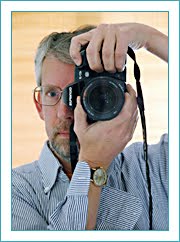Our tour of Kyushu ended with a visit to Mt. Aso after a stop at Takachiho Shrine. We went to see the shrine but also to complete a mission. We were asked by the proprieties of the inn we had stayed in the night before to deliver a package – some of her home-baked bread. On hearing that we were heading for the shrine, she asked us to take the bread to the Guji there (the head priest at the shrine), a friend of hers. Mission accomplished. The area around the shrine is said to be the location of several key events in the creation myths recorded in Japan's earliest written documents, but, as a guide I overheard said, no place names are mentioned, so other places have made the same claims. Regardless, the area is pretty. It’s known for its serried cedar forests (logging operations were evident everywhere – old stands of trees alongside clear-cut areas and areas newly replanted), for its terraced rice fields, and for its volcanic rock formations.
On my trip to Kyushu 48 years ago, we made a stop at Mt. Aso, but it was completely shrouded in dense fog. There was simply nothing to see. This time, the weather was more favorable. Aso is one of Japan's most active volcanos. In the main crater there is at present a blue-green lake of sulfuric acid that has been relatively stable, but occasionally there are small eruptions and even in a stable state the crater constantly spews steam. The area around the crater is strewn with rocks expelled in previous eruptions, mostly pumice and scoria. It all looks peaceful, but a row of colored warning lights at the entrance to the main crater area that reflect the level of sulfur dioxide in the air and concrete shelters that look like they belong on the WWII Normandy Coast are proof that anything could happen at any time. Most visitors appeared unconcerned.
Along the way, we stumbled upon the Sakamoto Zenzo Museum, a small museum dedicated to the work of – you guessed it – Sakamoto Zenzo, an abstract artist that was active mostly in the 1960s and 1970s and into the 1980s. The work was housed in an attractive building that looked fairly Western from the outside, but was very traditional inside. The place claims to be Japan’s only art museum with floors entirely of tatami mats.
One inn we stayed at, the Luna Observatory Auberge Mori No Atelier, has the second-largest privately owned telescope in Japan (82cm, or 32.3 inches – second-largest by one centimeter), a planetarium, and it offers stargazing sessions in the fields behind the inn. Telescopes of this size are generally owned by governments or institutes of education.
The view through the telescope, to be honest, was a bit disappointing as the weather was not very good, but the instrument itself was impressive. It dwarfs a figure standing beside it. At the touch of a button, it will find any celestial object in its database. The man who demonstrated the telescope works in the restaurant as a waiter. The man who did the planetarium demonstration also works as a waiter. It was amusing to watch them change hats. As waiters they were awkward. When talking about the stars, they were in their element.












No comments:
Post a Comment